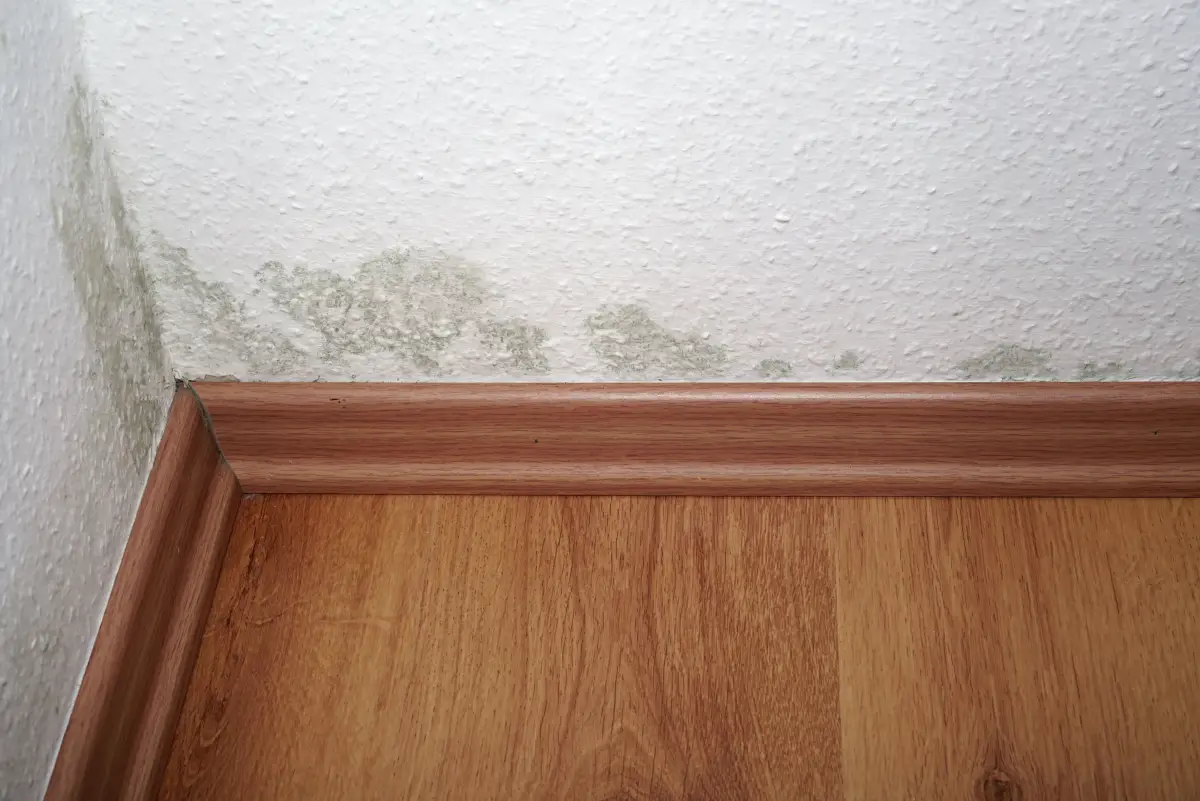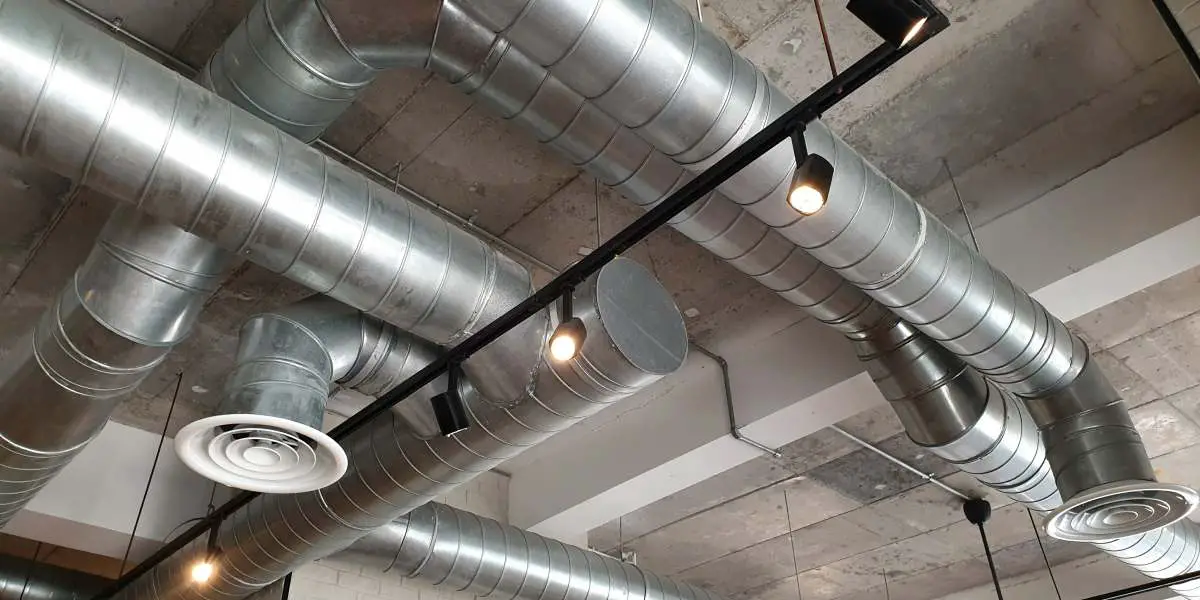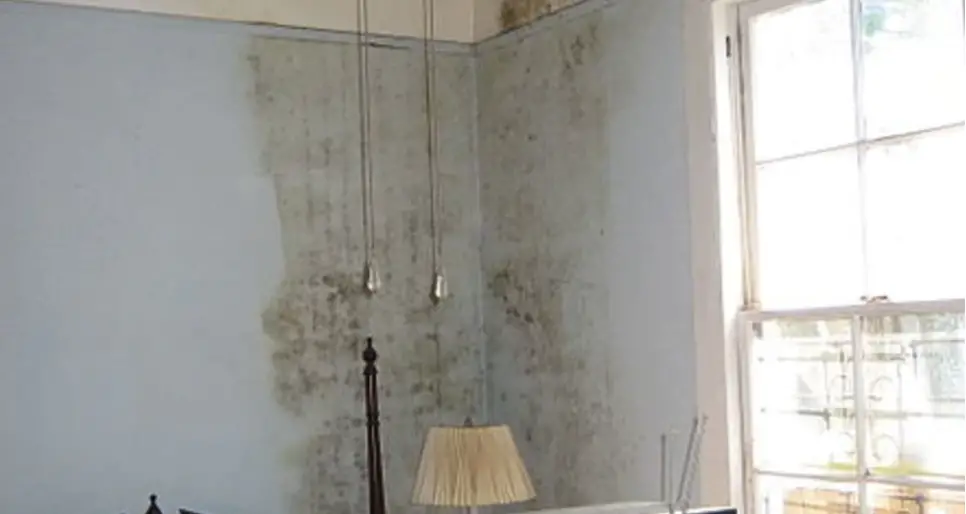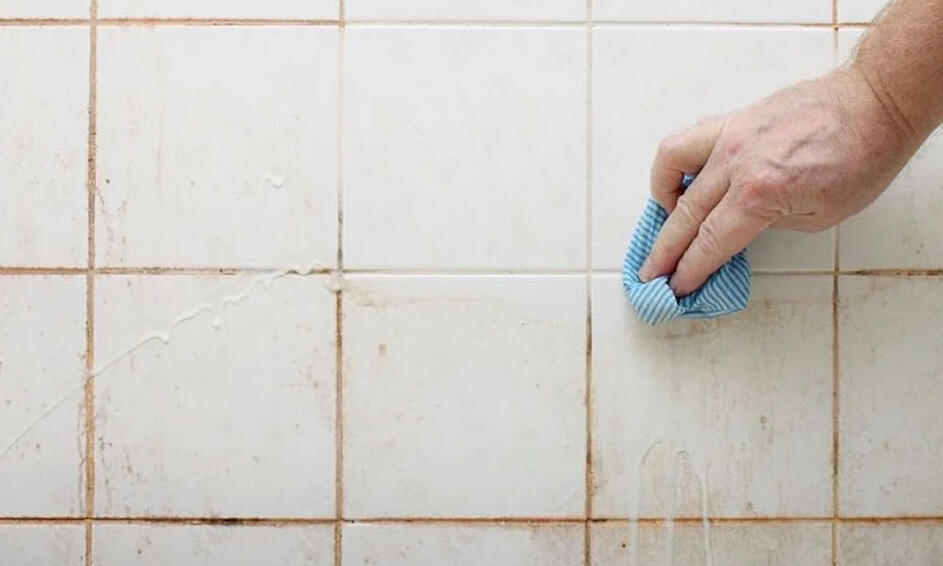Mold and mildew can be a huge problem in the home, and one of the most common places for it to grow is in the bedroom. Dampness in the bedroom can be a huge problem, especially during the winter months. Not only is it uncomfortable, but it can also lead to health problems. If you’re dealing with dampness or moisture in your bedroom, it’s important to take action right away.
If you are looking for ways to get rid of dampness in your bedroom quickly and easily, look no further! This blog post will discuss some tips that will help you get rid of dampness for good!
Why is there dampness in your bedroom?
Dampness in a bedroom can be caused by a variety of factors, including inadequate ventilation and/or insulation, poor building construction or design, excessive condensation, water leaks, and rising dampness.

Inadequate Ventilation: Poor airflow in the room can cause dampness to build up due to trapped moisture from daily activities like showering or boiling water. This is especially common when there are no windows or vents to help dispel moisture-laden air.
Insulation Issues: A lack of proper insulation can contribute to cold spots within your home that become prone to condensation. If you have poor insulation around your windows and doors, this could be causing excess moisture and leading to damp patches on walls near these areas.
Poor Building Design or Construction: Certain materials and construction techniques may leave your home susceptible to dampness. For example, if the walls in your bedroom are constructed of solid brick or stone, they will absorb moisture more quickly than lighter materials like plasterboard.
Excessive Condensation: High humidity levels can cause condensation on cold surfaces such as windows, mirrors and other metal objects. This moisture then runs down onto the floor and furnishings, leading to an increase in relative humidity within the room.
Water Leaks: Water leaks from plumbing fixtures can be crucial for determining the source of dampness in a home. Identifying these leaks and getting them repaired quickly can help to prevent further damage from occurring.
Rising Dampness: Rising dampness is caused when the moisture from the ground rises up through a building’s walls. This can occur if there is no physical barrier such as a damp-proof course in place, or due to faulty installation of one.
Signs you have dampness in your home
Some signs can show you that you may have dampness in your home. These include:
- Visible mold on walls, ceilings, and other surfaces – usually green, black, or brown in color
- Condensation forming regularly on window sills and walls
- Peeling wallpaper or paint
- Musty smell in the air
- Wet or rotten patches on walls, floors, and ceilings
- Damaged plasterwork or wooden frames around windows and doors
- Crumbling mortar between bricks outside of your property
- Rusty nails on external walls
- Efflorescence, a white powdery substance found mainly on the exterior of properties that is caused by water seeping through brickwork
- Rising damp – where a watermark can be seen on walls up to 1.2 meters high
It’s important to identify the signs of dampness in your home and address the issue as soon as possible. If left untreated, it can cause long-term damage to your property and make it unsafe to live in [2].
What kind of dampness can a bedroom have?
Condensation caused dampness

Condensation is the most common source of dampness in bedrooms. It occurs when warm, moist air comes into contact with a cold surface such as walls or windows and releases water droplets on them. This can happen due to poor ventilation, inadequate insulation, or heating that doesn’t reach all parts of the room.
One way to combat this is by having better ventilation in the bedroom and making sure that your windows are well sealed so that any warm air isn’t being lost through gaps or cracks.
You should also make sure you have adequate curtains or blinds to prevent direct sunlight from coming into the room and overheating it during the summer months.
Penetrating dampness
This kind of dampness occurs when water seeps through the walls or roof of a building, generally due to structural problems such as cracks in the masonry or missing tiles. It can also happen if there’s a leak in the plumbing system that allows water to seep into cavities and crevices.
The best way to combat this is by carrying out regular maintenance checks on your home’s exterior and making sure any plumbing issues are dealt with quickly.
Rising dampness
Rising dampness is caused by moisture from the ground being drawn up through porous materials such as brickwork, plaster, or mortar. This type of dampness typically affects older buildings that have been built without adequate protective barriers, but it can also occur in modern homes that aren’t properly insulated or have had their damp-proof course compromised.
There are various treatments available to help combat rising dampness, including chemical injection, physical barriers, and using absorbent materials such as sandstone or limestone chips.
Mould
Mold is a type of dampness that can occur due to high levels of condensation in the bedroom, either from inadequate ventilation or heating that doesn’t reach all parts of the room. Mold can be hazardous to your health so it’s important to take steps to prevent it by improving ventilation and making sure any water leaks are dealt with quickly.
In some cases, you may need to use specialist products such as anti-mold sprays or sealants to eradicate existing mold [3].
How to get rid of condensation damp in the bedroom?

Wipe down windows and sills every morning
One of the most effective ways to prevent condensation damp in your bedroom is by wiping down windows and window sills every morning. This will help remove any moisture that may have formed overnight.
Alternatively, if you don’t want to wipe down the windows every day, you can use a dehumidifier in the room.
Deal with steam from cooking
Steam from cooking can also cause condensation damp in the bedroom. To avoid this, make sure to close all kitchen doors when cooking and use extractor fans or open windows when necessary. This will help to draw out the steam and reduce any moisture build-up in the room.
Keep the walls dry
Keeping your walls dry is also important for preventing condensation dampness. Make sure that water doesn’t seep through any cracks or gaps in the walls, as this can cause dampness in the room. If you notice any problems, seal these areas with waterproofing products like masonry paint or silicone sealant.
Use mold-resistant paint and materials
Mold can be quite difficult to get rid of once it has started growing, so it’s important to take preventative measures wherever possible. Using mold-resistant paint on interior walls and applying sealant around windows will help keep moisture at bay. Such mold-resistant materials include tile grout, epoxy paints, and mildew-resistant drywall.
Install a ventilation system
Installing a ventilation system in your bedroom can also be a good way to reduce the amount of condensation damp in the room. Ventilation systems help to draw out moisture from the room and keep it at an acceptable level, which helps to prevent mold growth.
This is especially important for bedrooms with poor air circulation, as these are more prone to increased levels of condensation damp.
Insulate the room properly

Inadequate insulation can be a major cause of condensation dampness, so it’s important to make sure that your bedroom is insulated properly. Check around windows and doors for any gaps or cracks where warm air may be escaping and add some extra material if necessary.
It’s also a good idea to use double-glazed windows and install blinds or curtains on the inside of them to reduce heat loss further.
This will help keep the room warm and dry, thus helping prevent condensation damp from forming.
Install a dehumidifier
Using a dehumidifier in your bedroom is another great way to reduce condensation and keep your space comfortable. Dehumidifiers help to draw out moisture from the air and can be set at different levels to suit your needs. They are an especially useful long-term solution, as they can help maintain a healthy level of humidity in the room even when it’s not being used.
Improve ventilation
Poor ventilation can also cause condensation damp in bedrooms. To improve ventilation, open windows when possible to allow fresh air into the room and keep them closed during cold weather or at night when temperatures drop. You could also invest in an extractor fan which helps suck out damp air from the room while bringing in the fresh air.
Get rid of bathroom moisture
If you have an en-suite bathroom attached to your bedroom, it’s important to remember that moisture here can easily transfer into the bedroom. To prevent this from happening, make sure you keep windows open or use extractor fans when showering or bathing and wipe down tiles after use.

You should also consider installing a dehumidifier in the bathroom as well as in the bedroom for extra protection against condensation damp.
Don’t hang clothes to dry inside
Hanging wet clothes inside the bedroom can also cause condensation damp, so it’s best to avoid this wherever possible. If you need to dry clothes indoors, make sure that you hang them in an area away from any walls or furniture and leave some space between items for air circulation.
It’s also important to remember to keep windows open when drying clothes indoors.
Keeping your bedroom dry and well-ventilated is key to preventing condensation damp from forming. Following these simple tips should help you maintain a comfortable environment in which you can enjoy a good night’s sleep without worrying about moisture build-up in the room [4].
How to prevent mold?
- Keep humidity levels low: Moisture is the number one cause of mold growth, so it’s important to keep your home’s humidity levels at a minimum. Invest in a dehumidifier and use it regularly, especially in areas prone to moisture buildups like basements, attics, and bathrooms.
- Repair plumbing problems promptly: Water leaks can quickly lead to mold growth if they are not addressed right away. Regularly inspect the pipes in your home and make sure that all of them are properly sealed with no signs of wear or corrosion. Have any issues been repaired immediately by a qualified professional?
- Clean up spills and floods immediately: Any kind of moisture buildup should be cleaned up as soon as possible to minimize the risk of mold growth. Make sure you have the necessary cleaning supplies on hand so that you can act quickly in case of any leaks or spills.
- Monitor ventilation: Poor ventilation can increase the chances of mold growth, so make sure your home is properly ventilated with air circulation systems in place like exhaust fans and open windows.
- Use mold-resistant products: If you are renovating or remodeling, try to use materials that are designed to be resistant to mold growth, such as tile and non-porous surfaces like concrete or metal.
- Fix condensation issues: High levels of condensation around windows and other areas can also lead to moisture buildup which can cause mold growth. Make sure you properly insulate your home and fix any air leaks to prevent condensation from forming.
- Regularly inspect the area: Take time periodically to check for any signs of mold in areas with high humidity or moisture, like basements and attics, as well as around plumbing fixtures. It’s also important to regularly clean surfaces prone to mold buildup like shower curtains and bathroom sinks to reduce the risk of an infestation.
- Use bleach or other disinfectants: If you find any traces of mold, apply a disinfectant such as bleach directly onto the affected area and let it sit for at least 10 minutes before wiping it away with a clean cloth. Do this regularly to prevent any mold from continuing to grow.
Following these steps can help you prevent and control the spread of mold in your home. Be sure to contact a professional if you have any doubts or questions about mold prevention and remediation.
Is dampness in the bedroom harmful to your health?
Dampness in the bedroom can be harmful to your health. Dampness can create an environment that encourages mold and mildew to grow, both of which can cause allergies and asthma attacks. In addition, excessive moisture in the air can also aggravate respiratory symptoms such as congestion and coughing.
Additionally, high levels of humidity can lead to other problems such as dust mites and musty odors. Long-term exposure to these elements could increase the risk of developing chronic respiratory conditions.
Therefore, it is important to take steps to reduce dampness in the bedroom by using dehumidifiers or improving ventilation to ensure healthy air quality and a comfortable sleeping environment.
It is also a good idea to routinely inspect your bedroom for any signs of mold or mildew.
To help prevent water damage from occurring in the first place, be sure to seal any cracks or gaps in windows and doors, install proper guttering outside, and regularly check for plumbing leaks.
Additionally, use waterproofing materials around windows and other areas where moisture could enter your home. By taking these steps, you can ensure that your bedroom remains dry and comfortable – creating an environment that promotes healthy sleeping habits [5].
FAQ
How do I stop dampness in my bedroom?
The best way to stop dampness in your bedroom is by making sure the room is well-ventilated and free of moisture. Start by regularly opening windows and/or doors to allow fresh air to flow through. You can also invest in a dehumidifier, which will reduce humidity levels in the room and give you peace of mind that you’re not breathing in too much moisture each night.
Additionally, look for any potential sources of water leaks or water damage in the room and get them taken care of as soon as possible.
Finally, make sure there isn’t an excessive amount of furniture or items blocking airflow throughout the room so air can easily move around without getting stuck behind walls or other objects.
What causes dampness in bedrooms?
Dampness in bedrooms is typically caused by high levels of humidity in the air as well as any potential sources of water leaks or water damage. Humidity levels tend to be higher during the summer months when temperatures are warmer and moisture from outside finds its way into the house.
Additionally, if your home has poor insulation, small gaps and cracks around windows and doors can allow moist air to enter, creating damp spots throughout your home. Leaks can also be an issue – water seeping through floorboards, walls, plumbing fixtures or appliances can quickly cause mold and mildew growth in affected areas.
Will a dehumidifier get rid of dampness?
Yes, a dehumidifier can help reduce the amount of moisture in your bedroom and get rid of dampness. Dehumidifiers work by absorbing moisture from the air and lowering humidity levels, which reduces the potential for mold and mildew growth.
Dehumidifiers also help to keep allergens such as dust mites at bay, so if you have allergies or asthma this is an especially beneficial option.
Be sure to regularly empty the container that collects water or place it on a timer so it runs only when necessary.
What happens if you sleep in a damp room?
Sleeping in a damp room can have several negative effects on your health. The moisture from the air encourages the growth of mold and mildew, which can lead to respiratory issues such as asthma or allergies. Additionally, inhaling high levels of airborne moisture can cause congestion and other breathing problems.
Finally, spending long periods in a damp environment can also make you more susceptible to cold and flu-like symptoms due to weakened immune systems.
Does opening windows help with mold?
Yes, opening windows and ventilating damp rooms can help prevent the growth of mold and mildew. Fresh air helps to reduce humidity levels in the room, which makes it harder for spores to reproduce and spread rapidly.
Additionally, if there is any water damage in your home that needs to be addressed, having windows open allows moisture from wet areas to evaporate more quickly.
Make sure to regularly open windows throughout the day, especially after taking a shower or bath when humidity levels will likely be at their peak.
What temperature should I keep my bedroom at?
The optimal temperature for bedrooms typically ranges between 65-72°F (18-22°C). Keeping your bedroom slightly cooler than other rooms in your home will allow you to sleep more comfortably and uninterrupted.
Additionally, this temperature range helps discourage the growth of mold, mildew, and other allergens that thrive in warmer temperatures. During colder months, you may need to adjust your thermostat slightly higher to prevent drafts from entering the room through windows or doors.
Will heating a room stop dampness?
Yes, using a heater can help reduce the dampness in your bedroom. Heaters work by raising the temperature of the room and reducing moisture levels in the air, which makes it harder for mold and mildew to grow.
Additionally, keeping your bedroom warm will make it more comfortable when sleeping or lounging around. Be sure to use a thermostat so you don’t accidentally overheat your room and make sure that all windows and doors are closed before turning on your heater.
This helps to ensure that hot air isn’t escaping outside and cold drafts are from entering inside.
Finally, be mindful of how long you’re running your heater as this could increase energy costs if used excessively.
Useful Video: How to Find and Fix Your Damp Problems
Conclusion
Getting rid of dampness in the bedroom is a difficult task, but it is not impossible. With proper ventilation, regular inspection, and maintenance of any underlying causes, dampness will gradually be eliminated and the room will become much more comfortable.
In addition to tackling the problem head-on, homeowners should also take proactive steps to prevent further dampness from occurring in their bedrooms. This can include improving insulation, using dehumidifiers where necessary, and ensuring windows are kept open during humid weather.
Ultimately, dampness may be an ongoing battle for some homeowners – but with the right approach and ongoing vigilance, it can be conquered.
References
- https://www.damp2drysolutions.co.uk/blogs/how-to-get-rid-of-damp-in-bedroom/
- https://hoa.org.uk/advice/guides-for-homeowners/i-am-improving/how-to-spot-and-get-rid-of-damp/
- https://lawrenceandtaylor.co.uk/damp-identifying-treating-the-key-types-of-household-damp
- https://www.idealhome.co.uk/diy-and-decorating/how-to-get-rid-of-damp-185033
- https://www.nhs.uk/common-health-questions/lifestyle/can-damp-and-mould-affect-my-health/










Leave a Reply